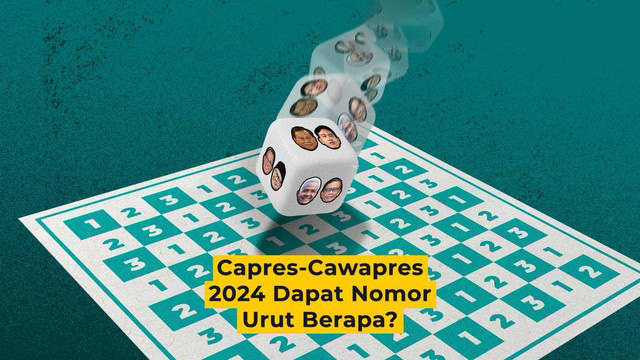Can Training Animals Detect Hidden Treasures? Insights from History and Games
Throughout history, humans have been fascinated by the idea of animals assisting in uncovering hidden objects, especially treasures. This fascination is rooted in myth, folklore, and real-world experiences, which collectively fuel curiosity about animals’ innate abilities and their potential role in treasure detection. Today, with advances in training methods and scientific understanding, there is renewed interest in whether animals can be systematically trained to assist in locating concealed valuables. This article explores the intersection of history, scientific research, and popular culture, including modern representations such as the game pirate bonana 2 statistics rinsed, to shed light on the fascinating question: can animals truly detect hidden treasures?
Contents
- The Science Behind Animal Detection Abilities
- Historical Accounts of Animals Assisting in Treasure and Object Detection
- Parrots and Their Unique Abilities in Recognition and Communication
- Can Animals Be Trained to Detect Hidden Treasures?
- The Role of Modern Games and Media in Shaping Perceptions of Animal Detection Abilities
- Case Study: “Pirate Bonanza 2” as a Modern Illustration of Animal Detection and Assistance
- Non-Obvious Perspectives: Ethical and Scientific Challenges in Using Animals for Treasure Detection
- Connecting Past, Present, and Future: The Evolution of Animals in Treasure Detection
- Conclusion: Assessing the Real Potential of Animals in Detecting Hidden Treasures
The Science Behind Animal Detection Abilities
Animals possess highly refined sensory systems that often surpass human capabilities. For instance, dogs have an extraordinary sense of smell, with an olfactory system capable of detecting molecules at concentrations as low as parts per trillion. This allows them to perceive scents that are imperceptible to humans, making them invaluable in fields such as search and rescue, drug detection, and even disease diagnosis.
The process of detection involves animals perceiving sensory input, processing it through their neural pathways, and responding accordingly. Training enhances this natural ability by associating specific scents or signals with commands, effectively conditioning animals to recognize and alert handlers to particular objects or substances. Research shows that with proper training, animals can differentiate between hundreds of individual scents, a testament to their impressive sensory acuity.
Examples of successful detection include:
- Search and rescue dogs locating missing persons in disaster zones
- Canines detecting illegal drugs at airports
- Elephants identifying landmines in conflict areas
Historical Accounts of Animals Assisting in Treasure and Object Detection
Mythology and Folklore: Animals as Guides and Helpers in Treasure Hunts
Throughout various cultures, animals have been depicted as guides in quests for treasure. In Greek mythology, for example, the loyal dog Argos was said to have recognized Odysseus after many years, symbolizing loyalty and perceptiveness. In Norse legends, ravens served as messengers and guides for treasure hoards hidden in the wilderness. Such stories reflect a cultural recognition of animals’ intuitive and perceptive qualities in the context of discovery.
Documented Cases Involving Animals like Dogs and Parrots
Historical records document instances where animals contributed to exploration and discovery. For instance, during the Age of Exploration, dogs often accompanied sailors and explorers, helping to locate supplies or detect land. Parrots, prized for their intelligence, were sometimes trained to recognize specific sounds or signals, although their role in treasure detection was more limited and often anecdotal.
Limitations and Challenges
Despite these stories, practical limitations existed. Environmental factors, the animals’ training levels, and the complexity of the hidden objects all affected success rates. Historical accounts often lack detailed documentation, making it difficult to assess the reliability of such cases objectively.
Parrots and Their Unique Abilities in Recognition and Communication
Recognizing Human Voices and Implications for Detection Tasks
Parrots are renowned for their ability to recognize and mimic human speech. Studies demonstrate that some parrots can distinguish between individual human voices, a trait that suggests a level of auditory processing that could, in theory, be leveraged in detection roles. For example, a parrot trained to recognize a specific sound or signal could alert handlers when it detects the corresponding cue, similar to how detection dogs are trained to respond to particular scents.
Behavioral Traits That Might Aid in Treasure Detection
Parrots exhibit curiosity and intelligence, often engaging with novel objects and environments. These traits could theoretically support detection tasks if properly trained, as they may be motivated to investigate and respond to specific stimuli. Their longevity in captivity (some species live for over 50 years) also offers the potential for long-term training and deployment in detection roles.
Limitations
However, unlike scent-based detection, parrots’ reliance on auditory and visual cues makes their application in treasure hunting less straightforward. Their training for specific scent detection is less developed, and their responses can be inconsistent. Nonetheless, their cognitive abilities continue to intrigue researchers exploring new detection avenues.
Can Animals Be Trained to Detect Hidden Treasures?
Scientific Basis for Training Animals to Detect Specific Scent or Signals
Training animals to detect treasures hinges on classical and operant conditioning. By repeatedly associating a particular scent or signal with a reward, animals learn to recognize and respond to the target stimulus. For example, detection dogs are trained with odorous samples of illicit substances or explosive materials, and similar methodologies could be adapted for precious metals or specific archaeological artifacts.
Success Stories and Experimental Attempts
While there are no widely documented cases of animals trained explicitly for treasure detection, experimental attempts have shown promise. Researchers have trained dogs to locate specific metals or archaeological relics in controlled settings. These efforts demonstrate the potential but also highlight the need for extensive training and environmental control.
Limitations and Ethical Considerations
Limitations include the animals’ environmental sensitivities, the difficulty in replicating real-world conditions, and the ethical implications of training animals for potentially hazardous or stressful tasks. Ensuring animal welfare is paramount, and ongoing research emphasizes humane training practices.
The Role of Modern Games and Media in Shaping Perceptions of Animal Detection Abilities
Popular media and games significantly influence public perception of animals’ capabilities. For instance, titles like pirate bonana 2 statistics rinsed depict animal companions expertly assisting characters in uncovering hidden treasures, often with a blend of fantasy and realism. Such portrayals can inspire interest and curiosity but may also lead to overestimations of actual animal abilities in treasure detection.
Educationally, these media representations can serve as engaging tools to introduce concepts of animal intelligence, training, and sensory abilities, provided audiences understand the distinction between entertainment and scientific reality.
Case Study: “Pirate Bonanza 2” as a Modern Illustration of Animal Detection and Assistance
In-Game Animals That Aid Players in Locating Hidden Treasures
In “Pirate Bonanza 2,” players can utilize animal companions—such as parrots, dogs, and even mystical creatures—that help locate hidden treasures through clues, sound cues, or visual signals. These game mechanics mirror real detection principles, like the importance of training and sensory cues, but in a simplified and engaging form.
How Game Mechanics Mimic Real Detection Processes and Training Principles
The game incorporates elements such as scent trails, sound indicators, and visual hints that players must interpret, paralleling how detection animals are trained to respond to specific stimuli. This gamification helps players understand the fundamental concepts of detection, training, and the importance of cues in treasure hunting.
Educational Insights from the Game’s Portrayal
While fictional, the game demonstrates how trained animals can enhance exploration efforts. It also encourages players to think critically about the skills animals possess and the scientific principles underlying detection technologies, fostering a deeper appreciation of real-world applications.
Non-Obvious Perspectives: Ethical and Scientific Challenges in Using Animals for Treasure Detection
Animal Welfare Considerations in Training for Detection Purposes
Ensuring the well-being of animals involved in detection tasks is crucial. Training methods must prioritize humane treatment, avoid stress, and respect natural behaviors. Ethical frameworks now guide the development of detection programs, emphasizing positive reinforcement and environmental enrichment.
Scientific Skepticism: Can Animals Reliably Detect Treasures?
Despite their sensory prowess, the reliability of animals in detecting culturally or archaeologically valuable objects remains uncertain. Variables such as environmental interference, the subtlety of scents, and training limitations pose significant challenges. Scientific validation is essential before deploying animals for treasure detection on a large scale.
Future Research and Technological Alternatives
Emerging technologies like ground-penetrating radar and chemical sensors may complement or eventually replace animal detection in treasure hunting. Nonetheless, animals’ unique sensory capabilities continue to inspire biomimetic technologies and innovative detection methods.
Connecting Past, Present, and Future: The Evolution of Animals in Treasure Detection
Historically, animals have been depicted as mystical helpers in mythology, symbolizing loyalty, insight, and guidance. Over time, these perceptions translated into real-world applications, with dogs and other animals trained for practical detection tasks. Modern media continues to shape and refine these images, influencing scientific research and training techniques.
Looking ahead, technological advances may enhance or even surpass animals’ detection abilities. However, the unique bond between humans and trained animals persists, and their role in exploration and discovery remains a compelling intersection of science, culture, and entertainment.
Conclusion: Assessing the Real Potential of Animals in Detecting Hidden Treasures
In summary, animals possess remarkable sensory and cognitive abilities that have historically contributed to exploration, discovery, and even treasure hunting. While myth and media often portray them as almost supernatural helpers, scientific evidence suggests their capabilities are substantial but bounded by practical and ethical constraints. Proper training can enhance natural instincts, but the reliability of animals in detecting specific hidden objects—especially in complex environments—remains an area of ongoing research.
“The synergy between animal training, technological innovation, and entertainment continues to shape our understanding of detection, blending ancient perceptions with modern science.”
Understanding both the capabilities and limitations of animals in treasure detection fosters responsible and effective applications, whether in archaeological excavations, rescue missions, or recreational pursuits. As technology advances, the role of trained animals may evolve, but their enduring bond with humans ensures they remain a symbol of exploration and discovery.


















